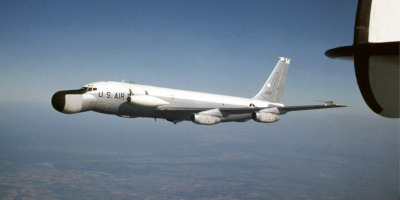
51-3123

56-3596

61-0327
A-LOTS
Airborne Lightweight Optical Tracking System
Airborne Lightweight Optical Tracking System (A-LOTS), built by the Nortronic Division of Northrop Corporation and delivered to the Eastern Test Range in November of 1965, was operationally accepted in December of 1966.
The A-LOTS system consists of a manual tracking station, a pod that houses an optic sensor and a high-speed 70-millimeter film camera, and a control console. A target visually sighted from a B-50 gun sight through a clear astrodome mounted on top of the aircraft. The camera pod mounted on the cargo door of the plane and slaved to this sighting station. The initial image viewed at the operation console on a closed-circuit television system, which has a coarse field of view. The image is then picked up and tracked either automatically or manually, as viewed on a television monitor in a more exceptional field of view.
The 70-millimeter photographic camera operates from 10 to 80 frames per second to record such events as they occur like booster cutoff and staging. The camera control panel displays the frame rate and houses the remote shutter control. The remote shutter control allows adjustment of exposure times at these varying frame rates.
Although designed primarily for use on the Air Force Eastern Test Range (AFETR), the A-LOTS equipped aircraft on occasion called to duty at the Western Test Range. During many launches on the Eastern Test Range and other test ranges, the A-LOTS is considered a prime source of data, particularly during early development launches on various programs.
A-LOTS installed on the Apollo Range Instrumentation Aircraft proved to be ineffective due to the attainable altitude of the ARIA. The ARIA aircraft 30 thousand pound equipment package limited the aircraft's altitude.
Credit: Randy L. Losey
Credit: United States Air Force
Editor: Randy L. Losey